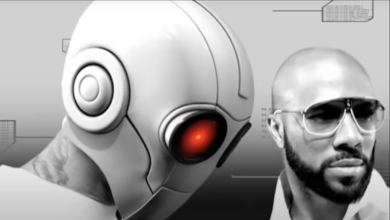5 Ways Artificial Intelligence Is Changing Healthcare

Healthcare artificial intelligence (AI) is in its infancy but has the potential to transform patient … [+]
The revolution of artificial intelligence (AI) in healthcare has just begun. Here are five promising areas where AI could make a big impact.
1. Speeding New Drug Development
Drug discovery involves identifying a molecular target, designing a drug to affect it, then testing the drug for safety and efficacy. This involves screening large numbers of potential compounds in a lab. Once a drug is chosen, nine in 10 ultimately fail in human clinical trials. The process can take 10-15 years and cost billions.
AI has started to speed drug discovery. In February 2022, Insilico Medicine initiated the first Phase I human trial for an anti-fibrotic drug for idiopathic pulmonary fibrosis, a disease that causes the lungs to stiffen and makes it hard to breathe. The molecule was discovered by AI and targets a new biological mechanism which was also discovered by AI.
The process took 30 months which is considerably faster than traditional drug discovery. While this is promising, to date no AI-discovered drugs have been approved by Food and Drug Administration (FDA).
2. Helping Doctors Make Tricky Diagnoses
In clinical medicine, many diagnoses are clear cut—such as skin infections. Yet some cases puzzle doctors. In a JAMA study, researchers studied seven tricky cases and tested if Chat GPT-4—an AI platform—could make the diagnosis only using the case description and test results. AI correctly diagnosed the case 39% of the time and listed the correct diagnosis as a possible but not top diagnosis in 64% of cases. Those numbers may not be reassuring to patients. Yet for doctors, it shows the power of AI to co-pilot perplexing cases, aiding in challenging medical decision-making.
3. Improving Interpretation Of Diagnostic Images
AI can sometimes see what human radiologists cannot. A study in Nature Medicine applied an AI model to CT scans for lung cancer screening. In lung CTs, a common problem is a high false positive rate—people getting biopsies that end up normal—and a high false negative rate where cancer is there but the CT looks normal. The AI model was not only highly accurate at picking up early cancer but even performed better than radiologists.
A study in Lancet Digital Health assessed breast cancer detection rates with mammography using human radiologists and AI. In more than 55 thousand women aged 40-74 undergoing mammography, 269—or 0.5%— were diagnosed with breast cancer. When the mammograms were read by a radiologist and AI together, 261 cases were detected. When two radiologists read the mammograms without AI, they found 250 cases. The AI alone detected 246 cases. The study concluded that human radiologists are still needed to read mammograms—at least for now.
4. Allowing Doctors To Focus On Patients Rather Than Their Computer
Some doctors write their notes into the electronic health record during clinical encounters with patients. This can be distracting and can affect a patient’s ability to connect with their doctor. Alternatively, doctors may write their notes at home after their shift.
Ambient AI is a new technology that can listen in on patient-doctor encounters and create draft notes. This lets doctors focus on talking to their patient rather than writing their note creating a more meaningful encounter. Doctors also spend less time drafting notes. A study in NEJM Catalyst reported on the first 10 weeks of ambient AI use in The Permanente Medical Group (TPMG) in California where 3,442 physicians used it in 303,266 visits across many specialties and locations. This is a remarkably high adoption rate for a brand new technology.
5. Letting Patients Feel Heard
People want to “feel heard” when they go to the doctor. Surprising research in Proceedings of the National Academy of Sciences found people felt more heard when reading AI-generated messages compared to human-generated messages. This is because AI was better at detecting emotion and providing support. The AI also offered fewer practical suggestions which can reduce people’s perceptions of feeling heard.
This capability show AI’s potential to improve patient communication. Multiple use AI cases may leverage this including writing more empathic discharge instructions and in AI chatbots to communicate with patients. However, when people discovered their messages were AI-generated, they felt less heard. This means AI may best serve more as a co-pilot role for clinicians helping them communicate with their patients with kindness and understanding.
There has been a proliferation of new healthcare AI companies over the last few years. Some may become unicorns. Others won’t survive. While it’s unclear which use cases will ultimately be adopted, what is clear is that AI will have a transformative effect as the technology matures and gets woven into the fabric of healthcare.



